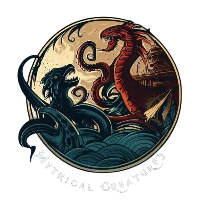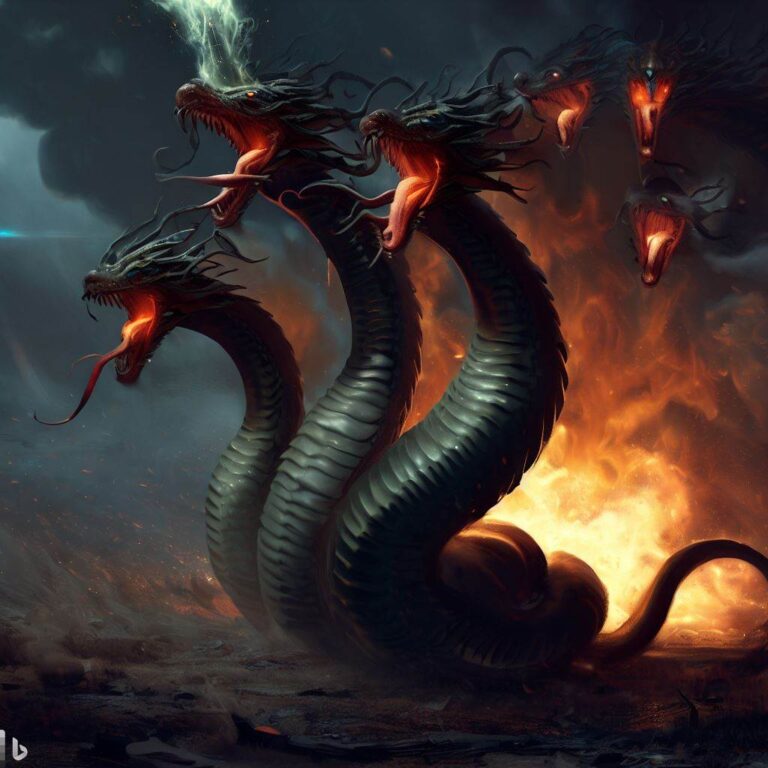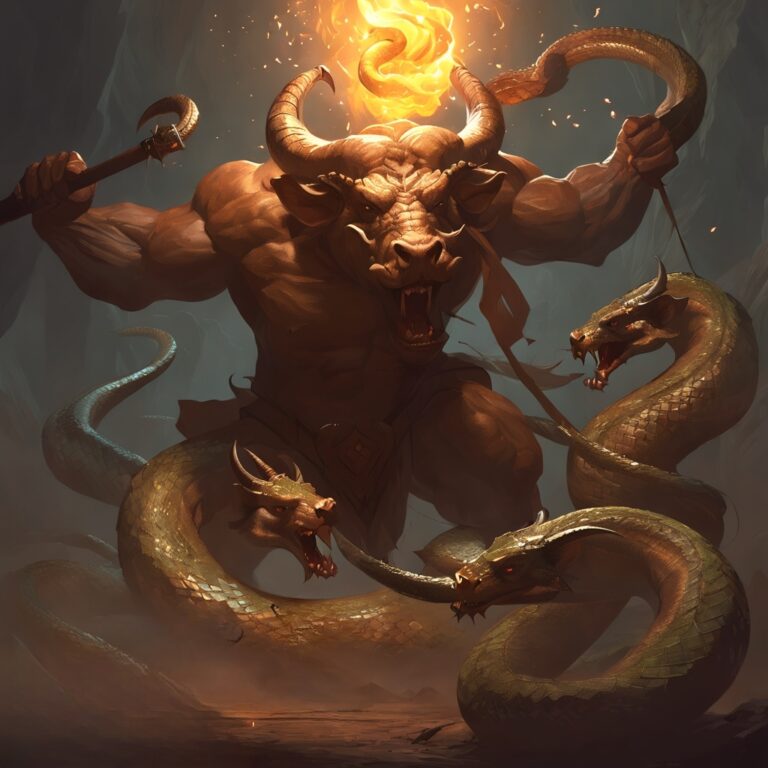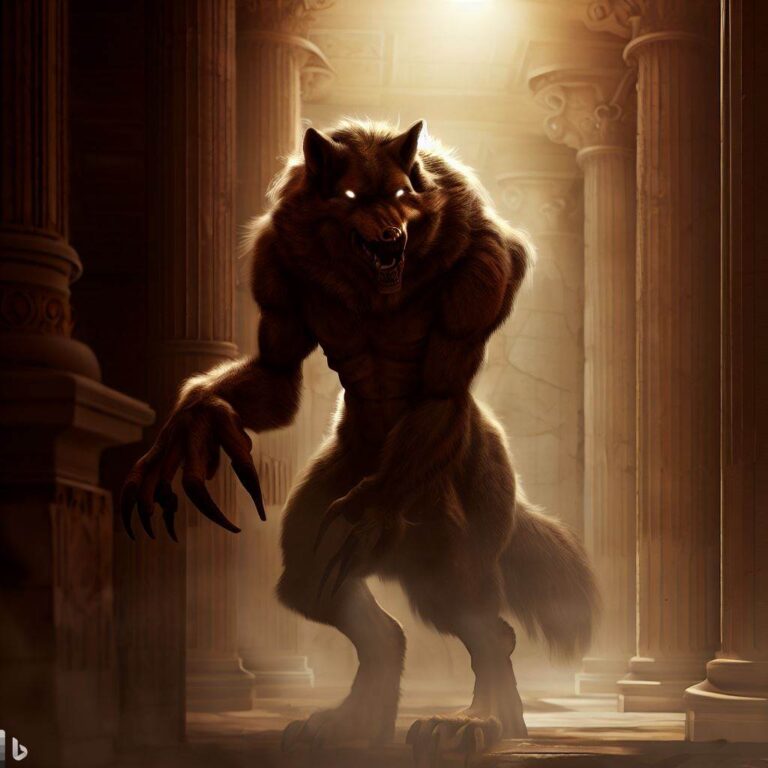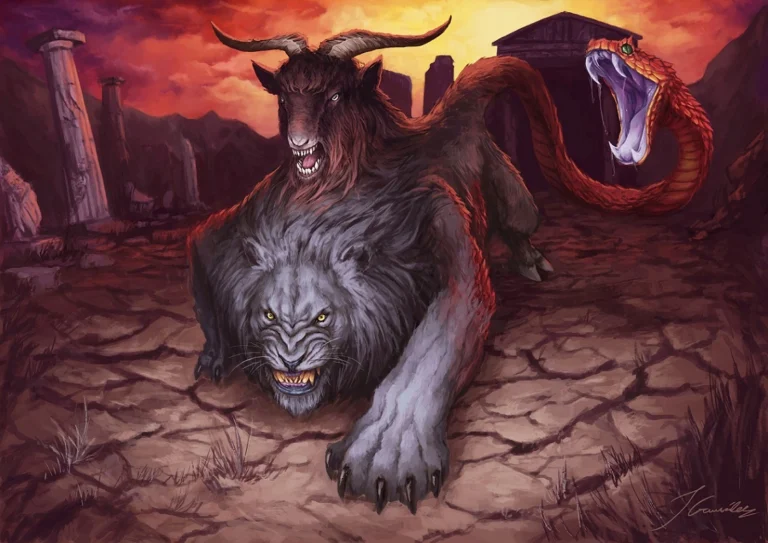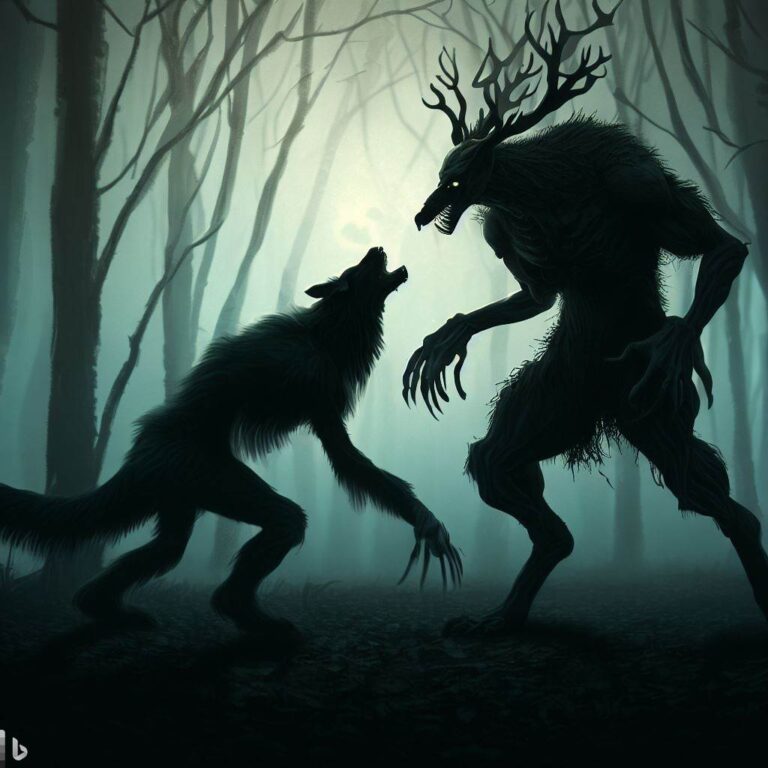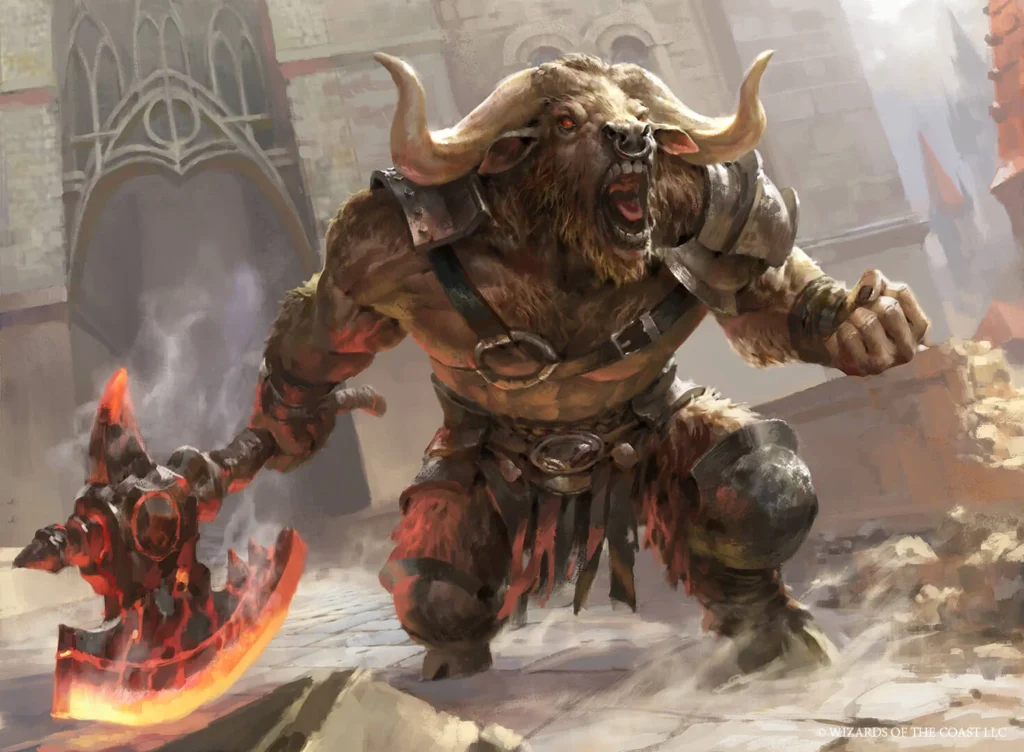
Image credits:deviantart.com
The Minotaur is one of the most famous and intriguing monsters of Greek mythology. With the head and horns of a mighty bull and the body of a man, the Minotaur dwelled at the center of the Cretan Labyrinth designed by Daedalus.
According to legend, the Minotaur was the offspring of Queen Pasiphae of Crete and a beautiful white bull given to King Minos by the god Poseidon.
The birth of this unnatural half-man, half-bull hybrid spelled trouble for King Minos. As the Minotaur grew, he became wilder and more savage, with an insatiable taste for human flesh.
To contain the monstrous creature, Minos commanded Daedalus to construct an elaborate, twisting maze known as the Labyrinth from which escape was seemingly impossible.
The Minotaur was locked away at its heart, hidden from view.
RELATED: Minotaur VS Hydra who would won?
ads content
Minotaur Mythology and Legend
The myth of the Minotaur has its origins in the Greek Myths on Theseus and the Minotaur. As the story goes, King Minos prayed to the sea god Poseidon to send him a bull from the waves to confirm his claim to the throne.
Poseidon obliged, sending a magnificent white bull from the sea. But instead of sacrificing the bull as promised, Minos kept it for himself. Furious at this deceit, Poseidon cursed Minos’ wife Pasiphae to fall in love with the bull.
Driven by her twisted passion, Pasiphae came to Daedalus for help. The famous inventor constructed a hollow wooden cow for the queen to hide in and mate with the white bull.
Their unholy coupling resulted in the birth of the Minotaur, a monster “with double nature, half-man and half-bull”.
Ashamed of his wife’s act and the Minotaur it produced, King Minos commanded Daedalus to build an elaborate, twisting maze known as the Labyrinth to imprison the beast.
The Minotaur was confined to the dark heart of the Labyrinth, unable to escape.
Appearance and Nature of the Minotaur
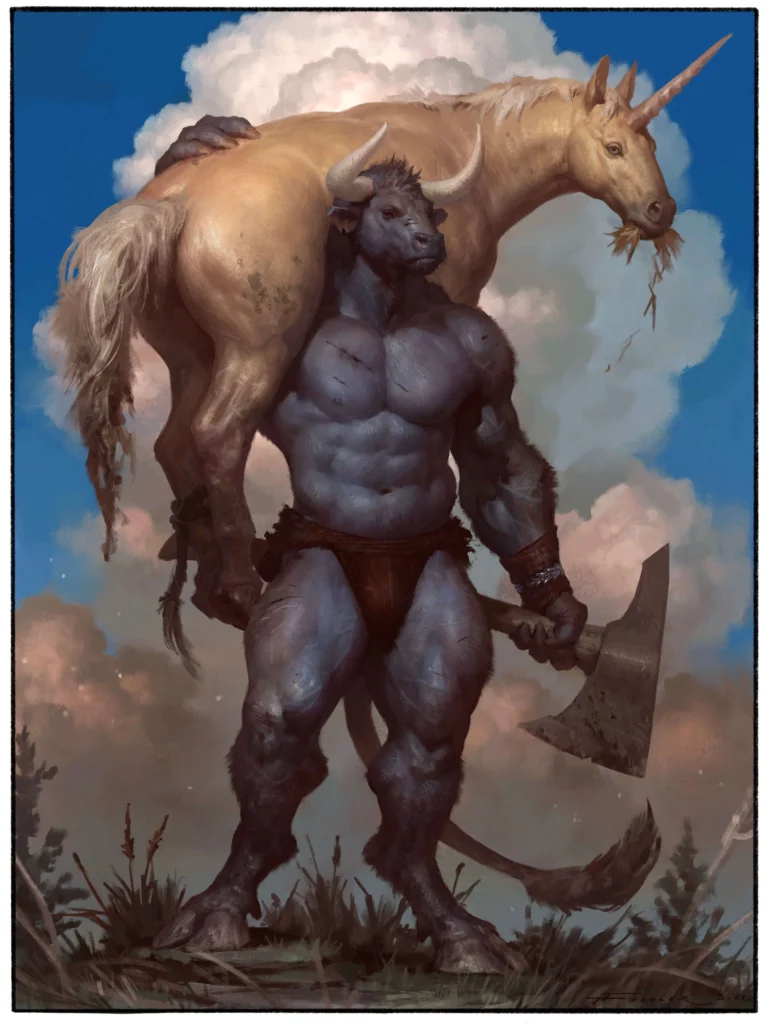
Image credits:deviantart.com
The Minotaur had the head and horns of a mighty bull atop the body of a man. Some descriptions give the beast the tail of a bull as well. But the Minotaur’s most terrifying feature was its savagery and propensity for violence.
Imprisoned since birth inside the Labyrinth, the Minotaur knew no other existence except as a vicious, bloodthirsty monster. Ancient sources describe the Minotaur as a “man-eating beast” and a “ferocious flesh-eater”.
Once locked within the Labyrinth, the sound of the Minotaur’s furious bellows and the screams of his victims echoed through the stone corridors.
The hybrid monster possessed brutal strength and speed. With its horns, hooves, and bare hands, it could easily overpower any man. None who ventured into the Labyrinth ever escaped the Minotaur’s hunger.
The Labyrinth of Crete Home of the Minotaur
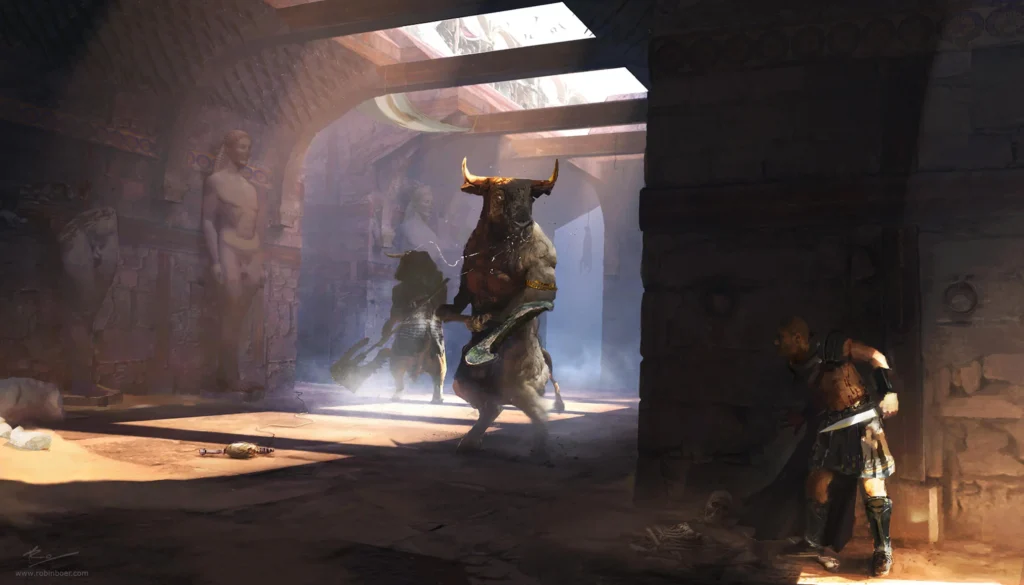
Image credits:deviantart.com
The Labyrinth constructed by Daedalus on the island of Crete became both the Minotaur’s prison and the scene of its infamous bloodshed.
According to legend, the Labyrinth was an elaborate structure located somewhere in King Minos’ palace at Knossos.
The term “labyrinth” originally meant “house of the double-axe”, referring to the complex, maze-like layout.
Once inside the winding passages of the Labyrinth, one would become completely lost and unable to find the way back out.
Lost travelers would wander the windowless corridors endlessly, until they ultimately encountered the Minotaur dwelling at the center.
The Labyrinth essentially became the Minotaur’s personal hunting ground. When King Minos forced the city of Athens to pay tribute by sending seven youths and maidens to Crete every nine years, these victims would be released inside the Labyrinth for the Minotaur to prey upon.
These sacrificial young Athenians never found their way out alive.
ads content
Theseus and the Minotaur
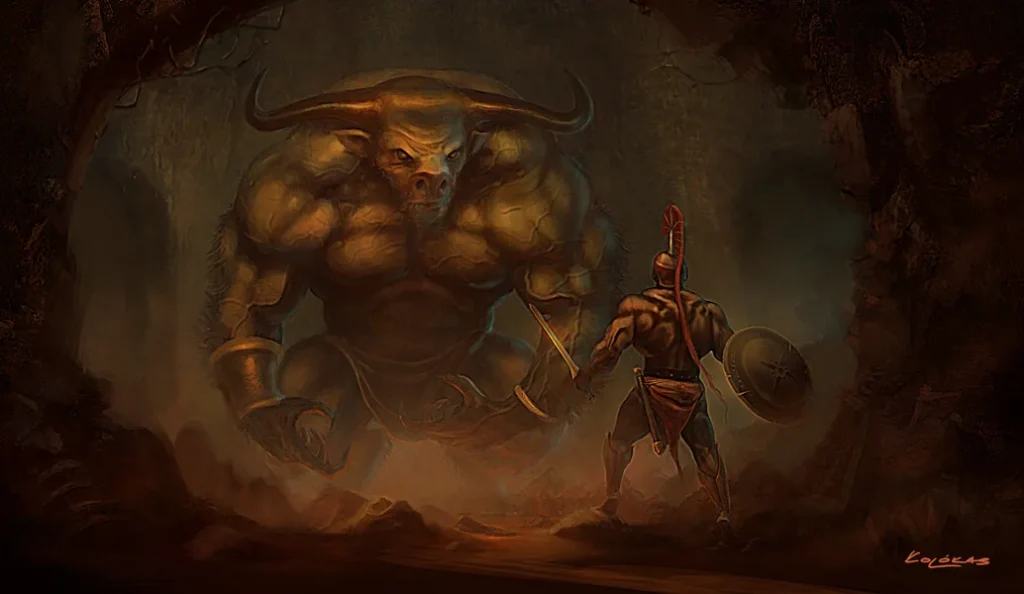
Image credits:deviantart.com
The legendary hero Theseus eventually ended the Minotaur’s reign of terror. When the time came for Athens to pay tribute once again to King Minos, Theseus bravely volunteered to be one of the fourteen youths sent to certain death.
Upon arriving in Crete, the daughter of Minos, Ariadne, fell in love with Theseus and vowed to help him.
Before the tributes entered the Labyrinth, Ariadne gave Theseus a sword and a ball of thread. He tied one end of the thread at the Labyrinth entrance and unwound it as he went through, so he could follow it back out.
Deep within the Labyrinth Theseus eventually found the Minotaur. During the fierce battle that followed, Theseus overpowered the Minotaur and slew the beast.
Victorious, Theseus used the thread to escape the Labyrinth and fled Crete with Ariadne. The Minotaur’s reign of horror was brought to an end by the heroic efforts of Theseus.
The Minotaur in Art and Media
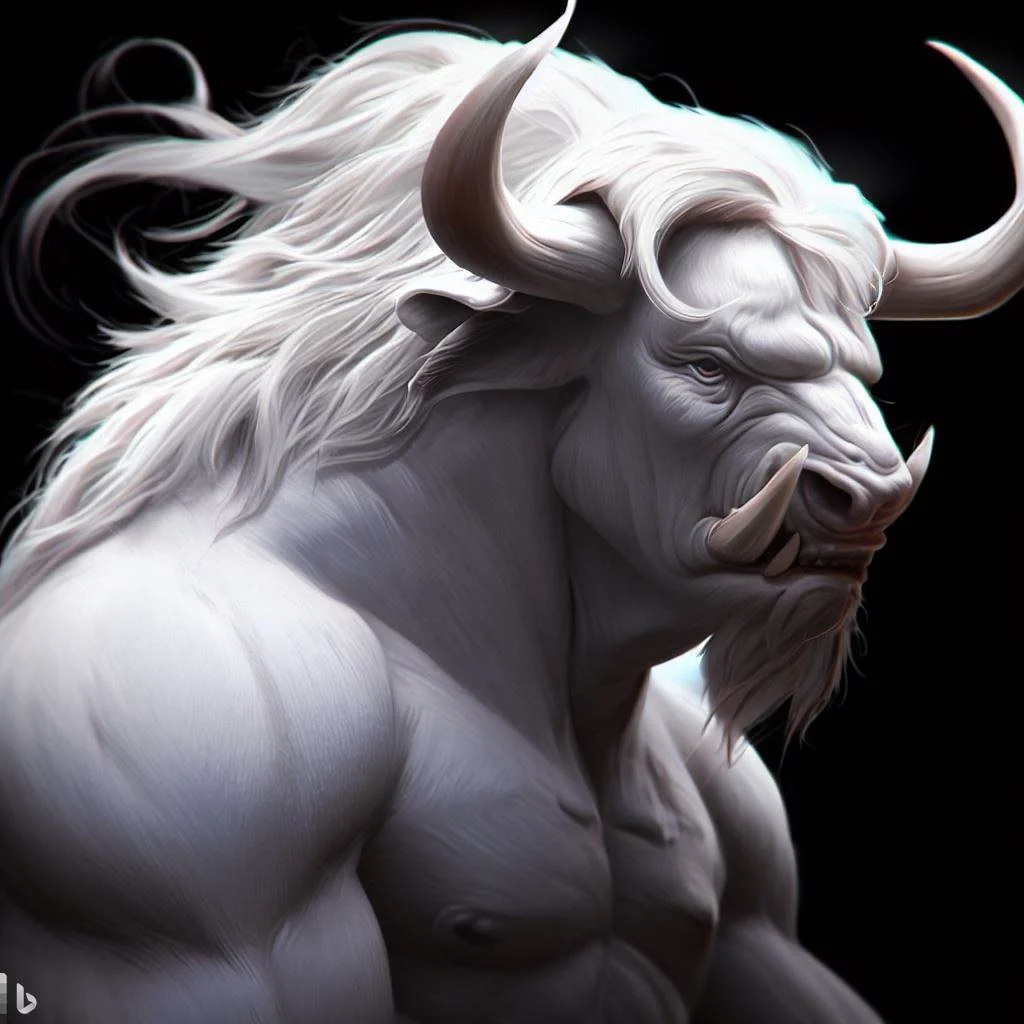
The dramatic myth of the Minotaur and the Labyrinth has provided inspiration for many famous works of art and literature over the centuries. In ancient Greek visual culture, painted pottery commonly depicted images of Theseus battling the bull-headed Minotaur.
In Dante’s Inferno, the Minotaur appears as a monster guarding the seventh circle of Hell. Literary works like Mary Renault’s The King Must Die provide a fictionalized narrative of the legends surrounding the Minotaur, Theseus, and the Labyrinth.
More recent popular culture works featuring the Minotaur include the horror film Minotaur (2006) and even an episode of Doctor Who titled “The Time Monster” involving the Minotaur. The Minotaur remains a popular reference in modern storytelling and fantasy.
Significance and Legacy
The enduring myth of the Cretan Minotaur has resonated through the centuries because of what it represents metaphorically.
The Minotaur can be seen as embodying the primal, bestial nature that lurks within mankind. The labyrinthine twists of the mind can entrap a person internally.
On another level, the Minotaur myth explores themes like the consequences of hubris, punishment for transgressions, and the redemptive power of human courage and intellect to conquer the beast within.
By vanquishing the Minotaur, Theseus exemplifies the ultimate triumph of wisdom and heroism.
Centaur VS Minotaur
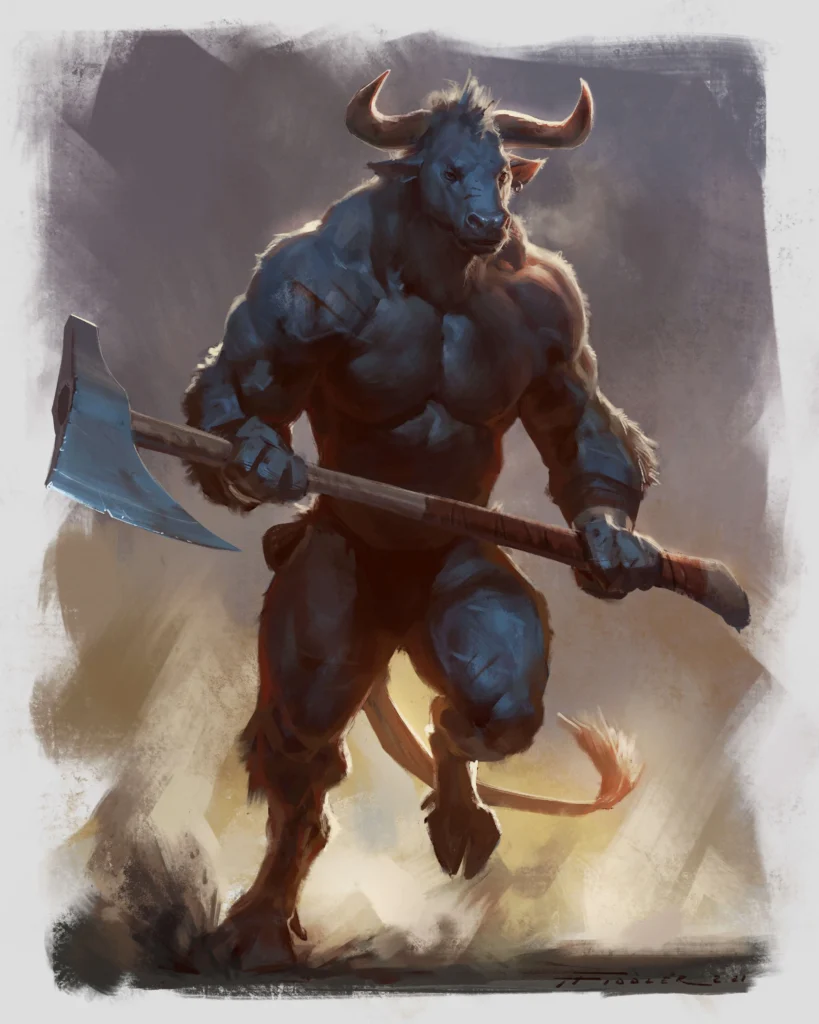
Image credits:deviantart.com
Minotaur and Centaur are two different kinds of mythical creatures from Greek mythology. They both have parts of humans and animals, but they are not the same.
Minotaur has the head and tail of a bull and the body of a man. He was blood-thirsty, and he lived in a big maze on Crete island. He ate people who were sent to him as a sacrifice.
Centaur has the head and body of a man and the legs and tail of a horse. He was very wild and strong, and he lived in the mountains and forests. He liked to drink wine and fight with other people.
Minotaur was a lonely monster who was killed by a hero. Centaur was a member of a tribe who had many adventures.
Frequently Asked Questions
What is the Minotaur?
The Minotaur was a monster from Greek mythology that had the head and horns of a bull and the body of a man. It dwelled at the center of the Cretan Labyrinth.
How to pronounce Minotaur in British English?
In British English it’s pronounced Mai-nuh-Taw
How to pronounce Minotaur in American English?
In American English it’s pronounced Mi -nuh- tor
How did the Minotaur die?
The hero Theseus killed the Minotaur when he was sent as a tribute sacrifice to Crete. With the help of Minos’ daughter Ariadne, Theseus navigated the Labyrinth and slayed the beast with his sword.
Where did the Minotaur live?
The Minotaur lived at the heart of the elaborate Labyrinth built by Daedalus on the island of Crete. It was imprisoned there by King Minos to contain its violence.
Does the minotaur labyrinth exist?
The existence of the minotaur labyrinth is a matter of debate among historians and archaeologists. Some believe that the labyrinth was a real structure that was part of the Palace of Knossos, the ancient capital of Crete.
Where is the Minotaur in the Labyrinth?
It is located under the Palace of Knossos on Crete.
Can you visit the Minotaur Labyrinth?
You can visit the ruins of the Palace of Knossos, which some archaeologists believe was the site of the mythical Labyrinth. You can also see a replica of the Labyrinth at the Labyrinth Park near Hersonissos.
Conclusion
The Minotaur remains one of the most iconic monsters of Greek mythology and a powerful symbol of mankind’s potential for savagery.
While a terrifying beast, the Minotaur and its labyrinthine world illuminate the importance of human intelligence, courage, and compassion in conquering our darker impulses.
By using wisdom and inner strength against primal violence, order and civilization can prevail.
The timeless story of the Minotaur’s defeat inspires us to find the hero within.
